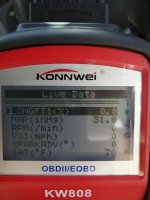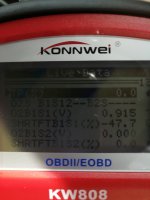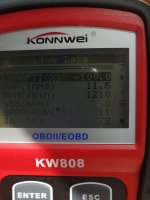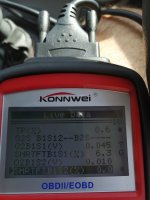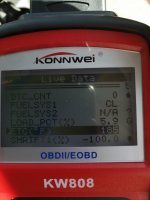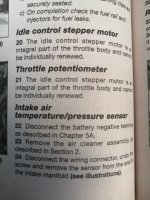Do you have an IR thermometer? The catalyst burns excess HCs. The outlet should be hotter than the inlet. If it's the same, the cat isn't working.
Wikipedia says -
Damage
Catalyst poisoning occurs when the catalytic converter is exposed to exhaust containing substances that coat the working surfaces, so that they cannot contact and react with the exhaust. The most notable contaminant is
lead, so vehicles equipped with catalytic converters can run only on
unleaded fuel. Other common catalyst poisons include
sulfur,
manganese (originating primarily from the gasoline additive
MMT), and
silicon, which can enter the exhaust stream if the engine has a leak that allows
coolant into the combustion chamber.
Phosphorus is another catalyst contaminant. Although phosphorus is no longer used in gasoline, it (and
zinc, another low-level catalyst contaminant) was until recently widely used in engine oil
antiwear additives such as
zinc dithiophosphate (ZDDP). Beginning in 2004, a limit of phosphorus concentration in engine oils was adopted in the
API SM and
ILSAC GF-4 specifications.
Depending on the contaminant, catalyst poisoning can sometimes be reversed by running the engine under a very heavy load for an extended period of time. The increased exhaust temperature can sometimes vaporize or sublime the contaminant, removing it from the catalytic surface. However, removal of lead deposits in this manner is usually not possible because of lead's high boiling point.
Any condition that causes abnormally high levels of unburned hydrocarbons—raw or partially burnt fuel—to reach the converter will tend to significantly elevate its temperature, bringing the risk of a meltdown of the substrate and resultant catalytic deactivation and severe exhaust restriction. Usually the upstream components of the exhaust system (manifold/header assembly and associated clamps susceptible to rust/corrosion and/or fatigue e.g. the exhaust manifold splintering after repeated heat cycling), ignition system e.g. coil packs and/or primary ignition components (e.g. distributor cap, wires, ignition coil and spark plugs) and/or damaged fuel system components (fuel injectors, fuel pressure regulator, and associated sensors) - since 2006
ethanol has been used frequently with fuel blends where fuel system components which are not ethanol compatible can damage a catalytic converter - this also includes using a thicker oil viscosity not recommended by the manufacturer (especially with
ZDDP content - this includes "high mileage" blends regardless if its conventional or synthetic oil), oil and/or coolant leaks (e.g. blown head gasket inclusive of engine overheating). Vehicles equipped with
OBD-II diagnostic systems are designed to alert the driver to a misfire condition by means of illuminating the "check engine" light on the dashboard, or flashing it if the current misfire conditions are severe enough to potentially damage the catalytic converter.



